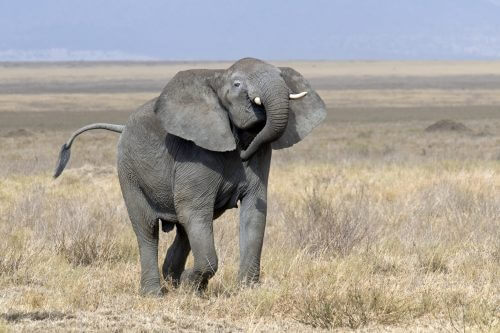The holes left behind by the elephants fill with water and host insects, leeches, tadpoles and more

When you weigh more than 6,000 kilograms, you leave a strong mark, literally, everywhere you step. New research shows that when it comes to the African elephant (Loxodonta africana), it benefits dozens of other much smaller species.
When elephants walk in the forest or savannah, they leave behind large footprints, sometimes 30 centimeters deep. The traces fill with water and create tiny habitats for other life forms. Researchers at Koblenz-Landau University in Germany and other institutions analyzed the content of 30 such water traces in Uganda. They found that at least 61 different species of invertebrates belonging to nine different orders made the water pockets their home, including Akaria, in Rome, Stegbeim, leeches and snails. Tadpoles were also seen.
Overall, the older the traces, the greater their biodiversity, probably due to the accumulation of leaves and organic remains that can be used as food. The results of the study have been published August 2016 in the online edition of the African Journal of Ecology.
The findings suggest that elephant tracks have a place in the life cycles of several biological species and in the food chain itself. "Who would have thought that something as innocent as elephant tracks could be so essential" to the lives of so many other species, says George Whitmire, the head of the scientific council of the association "save the elephants", who did not participate in the study.
The researchers acknowledge that this research is in its early stages and there is much more to be done to understand how dependent the tiny settlers are on these trace worlds. In any case, this study added to the body of research showing that elephants play a vital role in the ecosystem (such as spreading seeds through their large dung). The chief scientist of the study Wolfram Remmers, Koblenz-Landau says the study is another reminder of what we stand to lose if the poaching crisis in Africa continues.

2 תגובות
Since the footprints are bustling then the title of the article should be "Elephant footprints are bustling with life". When the elephant dies, most likely its body will be full of life and then the name will fit "footprints of elephants full of life".
That's just my humble opinion
Yehuda
Maybe our world is also the footprint of some transgalactic elephant.